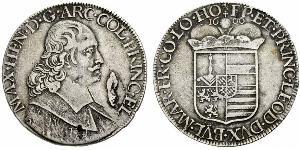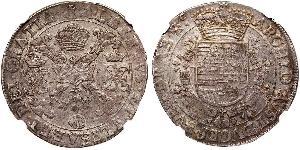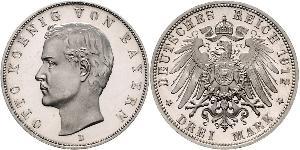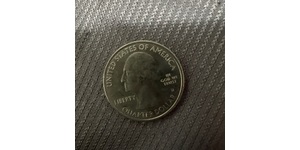1 Patagon Bavaria Silver
1664, Liege (Bishopric), Maximilian Heinrich of Bavaria. Silver Patagon Coin.
Mint Year: 1664
Denomination: Patagon
Mint Place: Bishopric of Liége (Belgium)
References: Davenport 4294, KM-80
Weight: 27.70gm
Diameter: 40mm
Material: Silver
Obverse: Bust of Maximilian Henry of Bavaria as Prince-Bishop of Liege right. Legend: MAX . HEN . D . G . ARC . COL . PRIN . EL
Reverse: Ducal crown above coat-of-arms of the Bishop. Date (15-63) above. Legend: * EP . ET . PRINC . LEOD . DVX . BVL . MAR . FR . CO . LO . HO
The Bishopric of Liège or Prince-Bishopric of Liège was a state of the Holy Roman Empire in the Low Countries in present Belgium. It acquired its status as a prince-bishopric between 980 and 985 when Bishop Notger, who had been the bishop of Liege since 972, acquired the status of Prince-Bishop after he received secular control of the County of Huy from the emperor . The Prince-Bishopric belonged from 1500 on to the Lower Rhenish-Westphalian Circle. It was headed by the Prince-Bishop of Liège. Its territory included most of the present Belgian provinces of Liège and Limburg, and some exclaves in other parts of Belgium and the Netherlands. The capital was Liège (which, as the bishopric, is Lüttich in German and Luik in Dutch). It briefly became a republic (the Liège Republic) from 1789 to 1791, before reverting to a Prince-Bishopric in 1791 then being annexed by France in 1795.
Maximilian Heinrich of Bavaria (8 October 1621 – 3 June 1688) was the third son and fourth child of Albert VI, landgrave of Leuchtenberg and his wife, Mechthilde von Leuchtenberg. In 1650, he was named Archbishop of Cologne, Bishop of Hildesheim and Bishop of Liège succeeding his uncle, Ferdinand of Bavaria. In 1683, he was named Bishop of Münster, but Pope Innocent XI refused to confirm this nomination. He died in 1688 and was succeeded by Joseph Clemens of Bavaria.
(1977 X 953 pixels, file size: ~536K)
Posted by: anonymous 2021-03-17
1664, Liege (Bishopric), Maximilian Heinrich of Bavaria. Silver Patagon Coin. aXF! Mint Year: 1664 Condition: About XF! Denomination: Patagon Mint Place: Bishopric of Liége (Belgium) References: Davenport 4294, KM-80 ($350 in VF!). Weight: 27.70gm Diameter: 40mm Material: Silver Obv ...
(924 X 455 pixels, file size: ~106K)
Posted by: anonymous 2015-09-01
BELGIEN Lüttich, Bistum Maximilian Heinrich von Bayern, 1650-1688. Patagon 1666, Lüttich. 27.75 g. Dengis 1101. Delmonte 471. Dav. 4294. Stempelbruch und min. Schrötlingsfehler. Sehr schön.
(900 X 446 pixels, file size: ~98K)
Posted by: anonymous 2017-12-14
Belgien-Lüttich, Bistum, Maximilian Heinrich von BayernPatagon 1665. Jahreszahl im Stempel umgeschnitten. Davenport 4294, De Chestret 639, Delmonte 471. Sehr schön - vorzüglich
(900 X 449 pixels, file size: ~127K)
Posted by: anonymous 2016-03-11
Belgien-Lüttich, Bistum, Maximilian Heinrich von Bayern Patagon 1671. Davenport 4294, De Chestret 639, Delmonte 471. Schöne Patina. Minimal justiert, sehr schön +
(1000 X 495 pixels, file size: ~133K)
Posted by: anonymous 2016-04-29
BELGIUM; BELGIA - Liege- biskupstwo - Maksymilian Henryk Bawarski 1650-1688, patagon 1679, srebro 27.64 g, Dav. 4294, Delm. 471 - GRADE: VF
(900 X 440 pixels, file size: ~131K)
Posted by: anonymous 2015-11-24
Belgien-Lüttich, BistumPatagon 1666. Davenport 4294, Delmonte 471. Justiert, kl. Schrötlingsfehler, sehr schön
536 coins were uploaded from 2025-06-11 to 2025-06-18
One of them is:





















